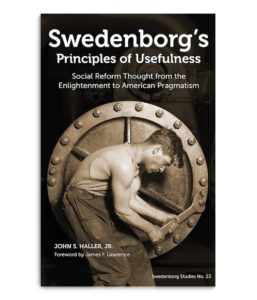Author Interview: John S Haller, Jr
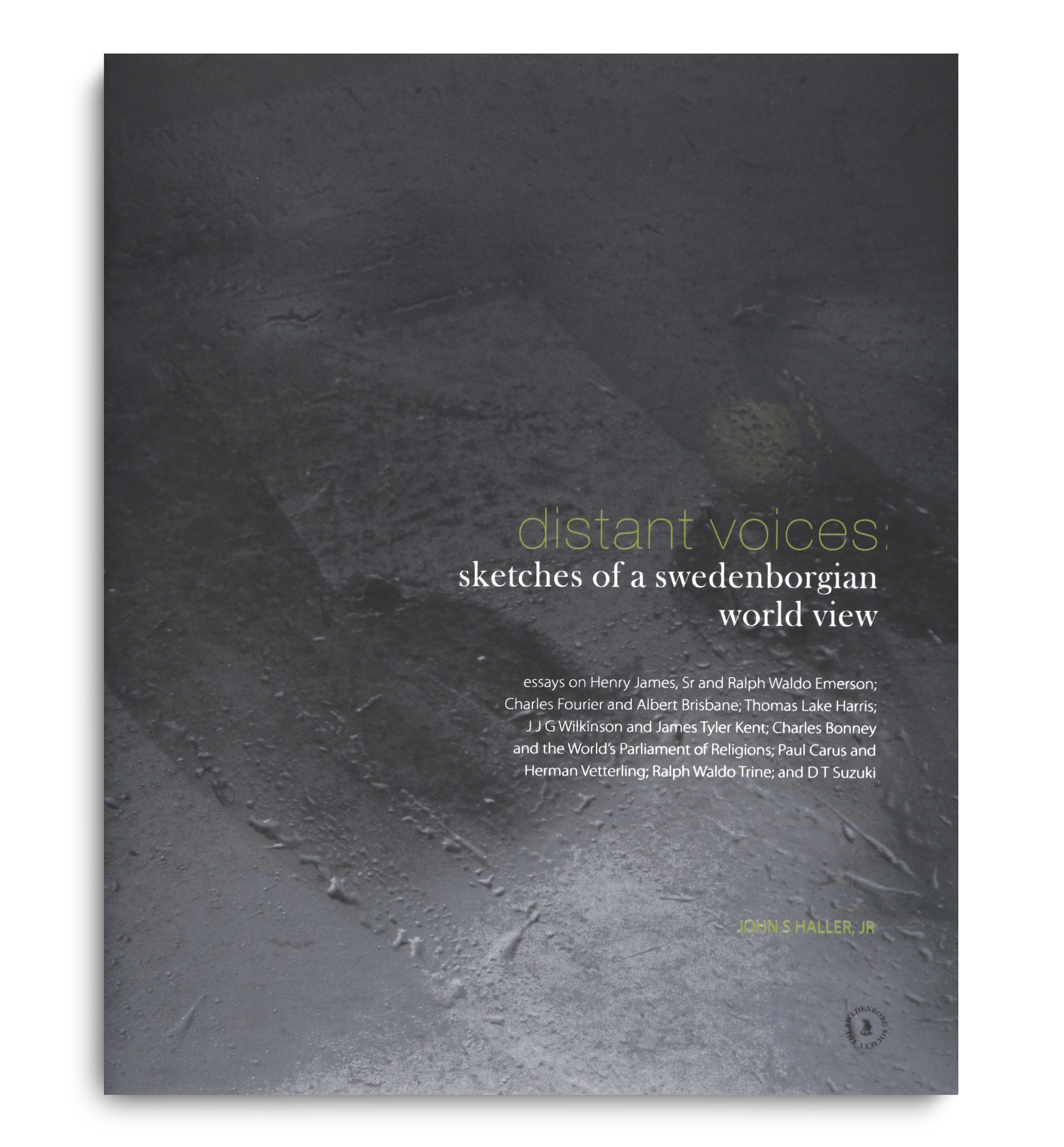
John S Haller, Jr in conversation with James Wilson
To accompany three online talks now featured on the Swedenborg House YouTube page, we present here an extended interview with John S Haller, Jr. To view these talks follow this link.
Introduction
John S Haller, Jr is emeritus professor of history and medical humanities at Southern Illinois University, Carbondale. He has written on subjects ranging from the history of race and sexuality to medicine, pharmacy and spirituality.
In 2017, the Swedenborg Society published John’s book Distant Voices: Sketches of a Swedenborgian World View. His more recent publications include, Man and His Muse: The Swedenborgian World of Rev. Frank Sewall (2019); and Fictions of Certitude: Science, Faith, and the Search for Meaning 1840-1920; Buddha’s Midwife: Paul Carus and the Open Court Publishing Company; and Modern Spiritualism: Its Quest to become a Science (all 2020). His most recent book is Swedenborg’s Principles of Usefulness: Social Reform Thought from the Enlightenment to American Pragmatism.
John is former editor of Caduceus: A Humanities Journal for Medicine and the Health Sciences and, until his retirement at the end of 2008, he served for eighteen years as vice-president for academic affairs for the Southern Illinois University system.
*
Q1: How did you discover Swedenborg and what led to him becoming one of your areas of research?
Somewhat ironically, my interest in Swedenborg did not occur until the middle years of my academic career. I had certainly come across his name many times in my readings, but usually in the form of a footnote or a passing reference. I don’t recall ever seeing a paragraph, much less a chapter, written about him.
It really wasn’t until the early 1990s when I became interested in alternative and complementary medicine, specifically the eclectics and homoeopaths, that I discovered many of the faculty who taught in their schools were Swedenborgians. I began asking myself if there was some reason for this, or was it just a coincidence?
That is what initially got me interested in the man, his beliefs, and his remarkable influence. For more than a decade I tried to encourage my graduate students to write their theses on some aspect of the man. When that failed to materialize, I felt obligated to explore his world myself.
Q2: Putting aside the hesitancy of some of your grad students in Illinois, do you think Swedenborg is receiving increased academic attention today compared to when you entered academia in the 1960s?
I definitely think so. Starting with your own website and that of the Swedenborg Foundation, there is now an immense wealth of new and old information on the Internet which addresses Swedenborg in some manner or form. There are free downloads of his writings, webcasts, a scholar’s corner, an OffTheLeftEye YouTube channel, bookstores, online digital libraries like the Hathi Trust, Google Books, JSTOR, and even tee shirts. The explosion of information available on the Internet has made Swedenborg accessible to the world.
All this suggests to me that much of what was once thought to be regional or national in Swedenborg’s influence has now become transnational in its extent. What I am trying to do in my own writings on Swedenborg is show that his ideas were carried into the twentieth and twenty-first centuries in the predominantly secular philosophy of pragmatism and even Buddhism. Both offer hope that the world is a place of openness and possibility where truth is an event inseparably bound to actions and social practices that work for the greater good, or what Swedenborg called the Grand Human.
Q3: You have written a huge amount of books and papers on a vast range of subjects, some narrowing their focus to one person (e.g., the physician Joseph Rodes Buchanan, the minister Frank Sewall, or the publisher Paul Carus), some broadening out to cover movements or ideas that span centuries (e.g., histories of homoeopathy and complementary medicine, studies on race and sexuality in medicine)—at what stage in your research do you know that a person is going to become the main subject, so to speak, or just a piece of a larger puzzle?
This is difficult for me to answer. I suppose you can say that my world of books and articles represent a patchwork of puzzles. Most are interconnected like building blocks; some are not. They represent my effort to understand and give meaning to a miniscule particle of this world of ours. Now in my 80s, I see myself trying to connect the loose ends of those puzzles I started years earlier.
My writings on alternative medicine, for example, concluded with Shadow Medicine, a study of the placebo effect, which essentially cast doubt on its various claims, while my books on Swedenborg will end with my forthcoming Swedenborg’s Principles of Usefulness. Its intent is to show that Swedenborg’s ideas eventually found their way into the body politic through the secular philosophy of pragmatism. As for my overall study of European and American thought, this culminated recently with my Fictions of Certitude: Science, Faith, and the Search for Meaning, which is to say I began my career believing that, as a historian, I could be wholly objective in my study of the past.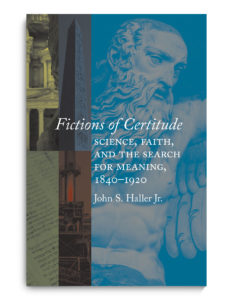
I am now convinced that is an impossible goal, a conclusion that brings me no remorse. I find that life is its own end and answer. The French existentialist Albert Camus described it as the emotion Sisyphus felt as he walked back down the mountain. As for the rest of my puzzles, I leave them for others to hunt for the final pieces.
Q4: Looking at your impressive bibliography in chronological order, would it be accurate to say, as the years have gone by, you have moved away from writing about aspects of medical history to writing more about the history (or histories) of ideologies and belief systems?
Yes, I think you can say that. It is natural and important to start small before trying to understand the big picture. I learned that lesson the hard way when I chose to write my dissertation on ‘The Idea of Race in America’ and only got as far as the first chapter, which became my Outcasts from Evolution: Scientific Attitudes of Racial Inferiority, 1859-1900. I never did try my hand at the larger issue. I leave that task to someone far wiser than me.
My own transition to broader studies represents a natural human response to see if there is a discernible picture on the pieces of the various puzzles I have been connecting through the years. It gives me the opportunity to search for patterns and enduring traditions in different documents and artefacts. There is an old saying, nonetheless true, that every generation must write its own history. That is because history is not just about the past; it is also very much about the present. History consists of a complex mixture of raw data, beliefs, biases, fears, dreams and hopes—all of which are intended to give context to the events occurring in the present and the questions they raise. As a people, we are constantly dipping into the past to give meaning to the present, and sometimes even prepare us for the uncertain future.
Q5: Much of your research on Swedenborg draws much needed attention to his presence in movements, or schools of thought, that he might not be immediately connected with, even by scholars or practitioners working within those fields, such as New Thought, or Pragmatism, or homoeopathy. Who is the most unlikely person, or what is the most unlikely place or institution, in which you have uncovered a Swedenborgian influence?
This is difficult to answer as I honestly don’t feel that any of the subjects I have written about are especially unusual. Perhaps one could argue it was my ‘Ah Ha’ moment when I discovered that many of the faculty teaching at the Eclectic Medical Institute in Cincinnati were Swedenborgians, or that many of the early leaders of American homoeopathy were Swedenborgians. These are possibilities. But I would argue that they become obvious to anyone who takes the time to read any of the countless journals published by these sectarian medical schools, as well as the journals belonging to their state and national organizations.
Equally important is the need to peruse the journals published by or on behalf of the New Church—both authorized and unauthorized. Aside from someone’s personal papers, I find that journals, more so than any other source, provide the most insightful information. More important than the articles in the journals are the sections titled ‘Communications’, ‘Notes’, ‘Committee Meetings’, ‘Editorials’, ‘Letters to the Editor’, etc. This level of grass-roots examination is tedious and time-consuming but offers the researcher a goldmine of information.
Q6: You have written a lot about medical ideas, practitioners and practices that might be described (perhaps unfairly) as being ‘alternative’ to mainstream allopathy, or even as ‘pseudosciences’, for example, homoeopathy, phrenology, mesmerism, eclectic medicine. Where does your interest in these areas come from? Do some important ideas have to start in the margins?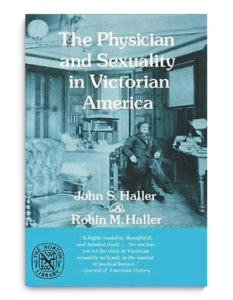
My interest in complementary and alternative medicine (CAM) derives from several sources, much of it incremental in nature. The first came with The Physician and Sexuality in Victorian American, which my wife and I co-authored. At the time I was affiliated with Indiana University and had access to the Kinsey Institute’s collection of print materials on sexuality, gender and reproduction. The collection also contained a wide range of CAM materials. I got hooked. In the process of examining these materials, I learned that several subject areas (i.e., eclectics and physio-medicals) lacked any formal histories, and others (i.e., Thomsonians and homoeopaths) whose histories were dated. And then I discovered the Lloyd Library and Museum in Cincinnati, a private non-circulating library whose collections include the complete papers of the Eclectic Medical Institute, the oldest and most prestigious of the eclectic medical schools; complete sets of local, state, regional and national medical journals; student matriculation records; faculty files; and correspondence. It was as if I had died and gone to heaven.
Between it, the National Library of Medicine in Bethesda, Maryland, and our own Morris Library, I was able to carve out one subject area after another. The experience also gave me the opportunity to teach about CAM and its relationship to evidence-based medicine (EBM) to our medical students. As for your last question, I believe there are definite things that CAM can teach EBM for the very reason that some ideas do begin at the margins. Eventually, however, CAM must face the gold standard of EBM, namely the double-blind randomized clinical trial or some variation of it. For most CAM areas, this is not possible. Despite CAM’s popularity in many circles, its poor performance in clinical trials and its clear failure to address the placebo effect hinders any substantive reconciliation with conventional medicine. Nevertheless, in our postmodern world, multifactorial causation has become more accepted as doctors and medical researchers adopt a more integrative role for nonconventional therapies—a road that is neither straight nor accompanied by clear markers.
Q7: Linked to the last question and your response, I find it curious how Swedenborg’s presence is significant in the history of homoeopathy, largely stemming from ideas drawn from his later ‘theological’ or ‘mystical’ works, whereas his presence in the histories of ‘mainstream’ medicine is far less overt, in spite of his large body of writings in the 1730s and 1740s on anatomy and the workings of the brain—why do you think this is?
It does seem a bit strange until you realize that it was Hahnemann’s Swedenborgian disciples who were seeking an explanation other than animal magnetism to explain the modus operandi for how dynamization/potentization worked. They found it in divine influx. For the most part homoeopaths like the Swedenborgians Hans Burch Gram, Constantine Hering, Charles Julius Hempel, James John Garth Wilkinson and James Tyler Kent were strong believers in the law of correspondences, namely that everything that happened in the natural world had its counterpart in the spiritual world.
As for why Swedenborg took such an interest in anatomy and the workings of the brain, in my opinion, it had less to do with what contemporary anatomists were doing as it was his interest in discovering the location of the soul. If divine influx, or God’s love, manifested itself as centres or points of energy (i.e., vibrations) coming from the cosmos, how and in what form did it enter the body? And where did it reside? Determined to find the answers to these questions, Swedenborg sought out the masters of anatomy to assist him in searching for traces of man’s soul by dissecting the human body. His journeys took him to Copenhagen, Hamburg, Amsterdam, Brussels, Paris and Italy, where he initiated an extensive search for this important organ that stood at the nexus of man and God. Swedenborg drew from the best medical knowledge of his day to formulate his ideas. He concluded that the heart, which many at the time thought was the location of the soul, and home to the divine influx, was actually little more than a pump. If not the heart, where was the soul of man located?
Swedenborg found his first clue in the lungs used to draw into the body the spirituous fluid, which the heart then distributed by way of the blood. So, where then was the soul? Swedenborg found its location in the cerebral cortex, which, in the context of eighteenth-century anatomy, was called the cortical gland, which served as the exchange centre between the spirit and the body, the infinite and the finite. It was there in the cortical gland that he discovered the purest blood, which he believed had both a natural and spiritual nature. Observing it closely, he felt that this pure spirituous fluid pulsated or vibrated in tune with the divine influx.
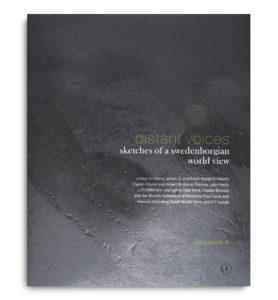 Q8: Your book Distant Voices examines several key figures who were influenced by both Swedenborg and Eastern religions and thought, seeking out the congruencies between them. Do you agree with Balzac in his description of Swedenborg as the ‘Buddha of the North’?
Q8: Your book Distant Voices examines several key figures who were influenced by both Swedenborg and Eastern religions and thought, seeking out the congruencies between them. Do you agree with Balzac in his description of Swedenborg as the ‘Buddha of the North’?
Yes, I do agree. The original title, as you noted, came from Honoré de Balzac’s Histoire Intellectuelle De Louis Lambert (Paris: Charles Gosselin, 1833). It appeared in a letter from Lambert to his uncle dated 25 November 1819: ‘Any man who plunges into these religious waters, of which the sources are not all known, will find proofs that Zoroaster, Moses, Buddha, Confucius, Jesus Christ, and Swedenborg had identical principles and aimed at identical ends. The last of them all, Swedenborg, will perhaps be the Buddha of the North’. But it was the Zen master, D T Suzuki (1870-1966), who turned the phrase into something much bigger with the publication of his Suedenborugu (1913), translated into English and published in 1996 as Swedenborg: Buddha of the North.
At the time, Suzuki had been working for Paul Carus, publisher of The Open Court and The Monist, and had assisted in his publication of The Gospel of Buddha (1894). While living with the Carus family in LaSalle, Illinois, he met Albert J Edmunds, a British-American who had worked as a librarian at Haverford College, the Philadelphia Library and the Historical Society of Pennsylvania. Edmunds, an aficionado of Buddhism who spent much of his life comparing Buddhism and Christianity, visited LaSalle in 1903 where he spent much of his time in conversation with Suzuki. Like many in his day, particularly following the enormously successful Parliament of Religions, which met at the Columbian Exposition in Chicago in 1893, Edmunds was one of many scholars who made comparisons between Christianity and Buddhism. His publications included Buddhist and Christian Gospels (1900), Buddhist and Christian Gospels Now Compared from the Originals (1904) and Buddhist Texts in John (1906).
It was Edmunds who suggested that Suzuki look to Swedenborg as the best representative example of Buddhist thought in Western culture. Had there not been the discussions between these two men, there probably would have been no justification for Suzuki’s translations of Swedenborg’s writings into Japanese, including The New Jerusalem and Its Heavenly Doctrine, Divine Love and Wisdom and Divine Providence.
Q9: We have just mentioned Balzac and his autobiographical and philosophical novella, Louis Lambert—how useful is fiction as a way of disseminating complex ideas and ideologies?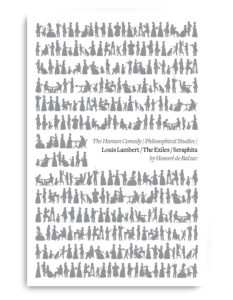
I find that fiction, if done right, opens an age to scrutiny in ways that historians can only imagine. Writers like Henry James, Edith Wharton, John Steinbeck, Nikos Kazantzakis bring me closer to a particular age than any historian ever could. They truly have a gift. As a way of disseminating complex ideas, who better than George Santayana’s The Last Puritan, Albert Camus’s The Plague, and William Styron’s Confessions of Nat Turner or Sophie’s Choice. What makes the first two most interesting to me is they are philosophers who explain themselves in fiction. I applaud that effort.
Q10: Your own fiction, in the form of the Detective William Frey series of novels, is replete with historical detail and insight—why did you decide to set the novels in the particular time period they are set in (late nineteenth century to start of the twentieth century)?
This is embarrassing. Since I did not use my full name, I had hoped no one would make the connection. I must apologize to crime novelists everywhere for I am a ‘work in progress’. Fiction is very difficult for me and I consider myself an aspiring novice, nothing more. I became interested in writing a crime novel when researching an article that Pharmacy in History published in 1975 on the use and abuse of tartar emetic in nineteenth-century therapeutics.
In my research, I came across a murder case in Maryland where a woman, Elizabeth Wharton, went to trial for poisoning a Civil War General to whom she owed money. It took me 44 years before I decided to write about it. The case not only included high-powered attorneys defending Mrs Wharton, but involved two medical schools which, during the early days of forensic science, took opposing sides on how evidence should or should not be assembled.
William Frey was a real detective who was much maligned during the trial. Although I followed much of the court transcript, I fictionalized several individuals to help tell the story. After the trial, I have Frey moving to another state where he continues his career as a detective. Except for this first book, the other dozen stories are pure fiction. In my latest novel involving Frey, which I have not yet finished, he dies. Perhaps that is the kindest thing that could happen in my efforts to write fiction.
Q11: And finally, as a medical historian, can I ask for your take on the current COVID-19 pandemic. Are there any similarities to, or lessons that we can learn from, earlier historical periods?


